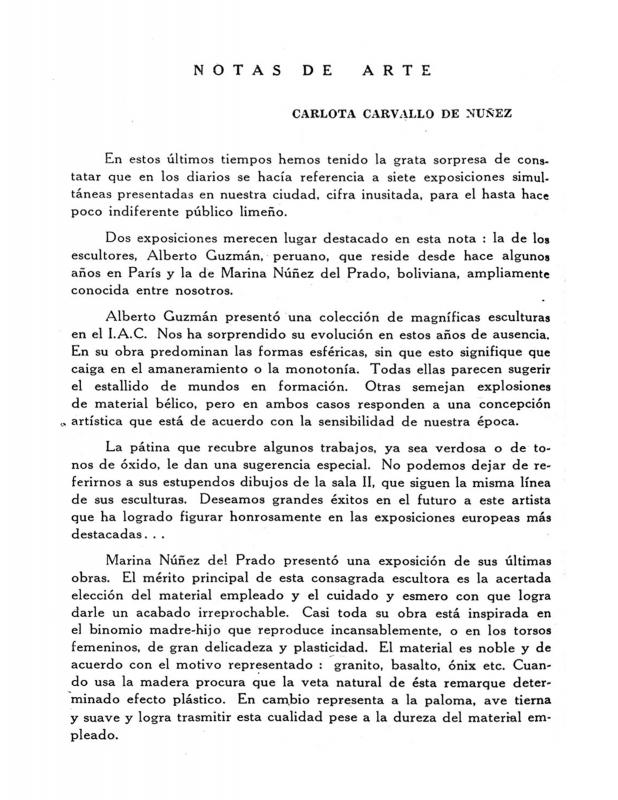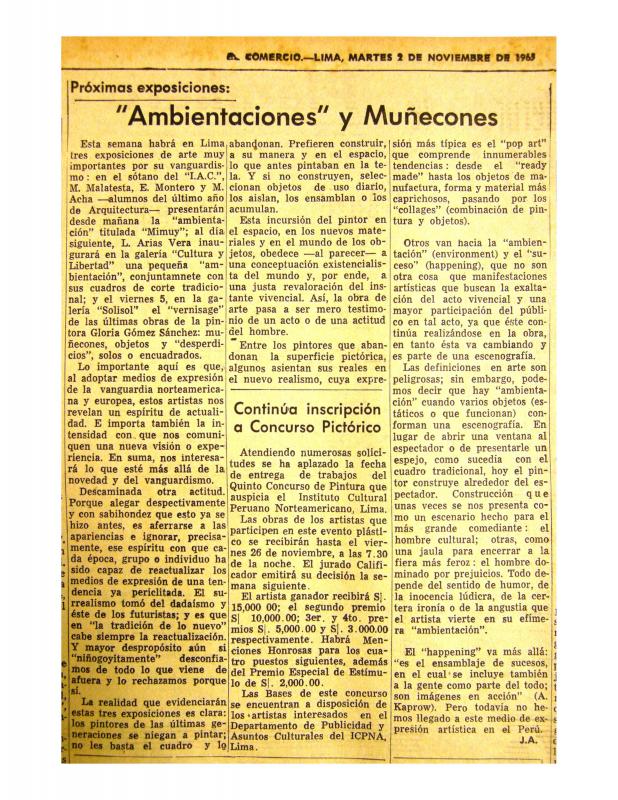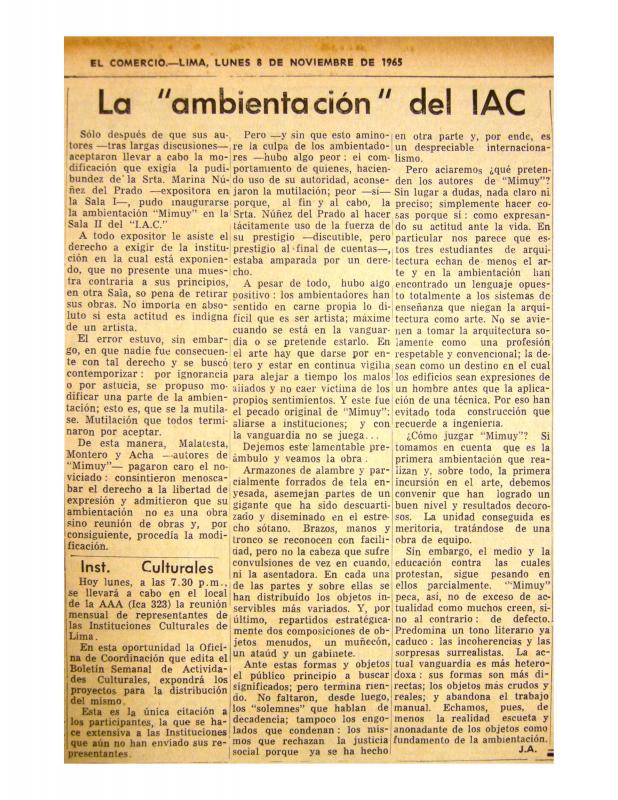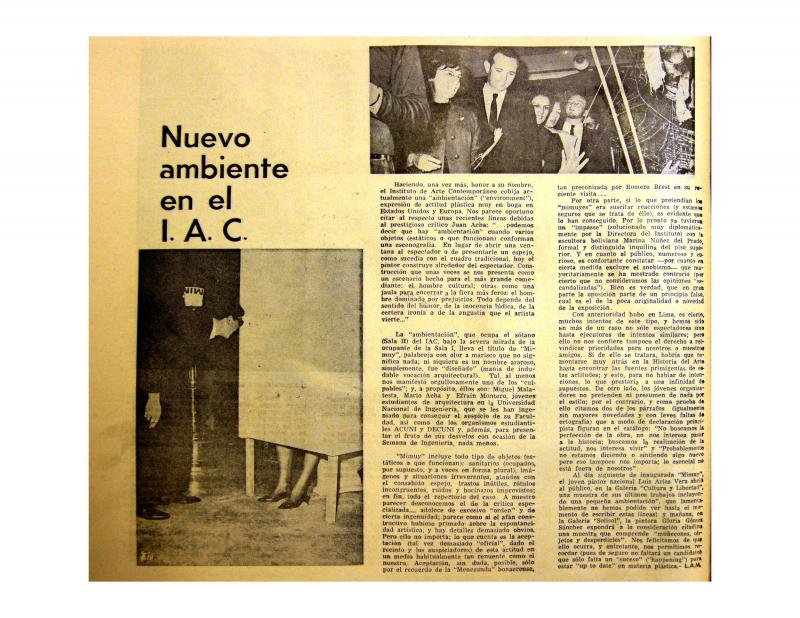In late 1965 in Lima three exhibitions opened that are now considered to be the earliest harbingers of installations and happenings in Peru. They were Mimuy, an installation by Mario Acha (the son of the critic Juan Acha), Efraín Montero, and Miguel Malatesta; Yllomomo by Gloria Gómez Sánchez; and Escenografía para un folklore urbano by Luis Arias Vera. Juan Acha promoted these experimental projects in his column in El Comercio, the influential Lima newspaper. The critic nonetheless expressed his reservations concerning the failed happening in which a thief pretended to steal someone’s purse. Beyond the anecdotal aspect of the incident, Acha questioned the literalness of the action. In spite of his objections, he applauded the participatory nature of the exhibition. Escenografía para un folklore urbano was also a critical and analytical examination of local customs in Lima, which contradicts those who contend that new “art trends” are nothing but copies of foreign works. Some years later, Arias Vera joined the Arte Nuevo group (1966–67), and as from 1968 worked for SINAMOS (Sistema Nacional de Movilización Social), one of the propaganda arms of the Gobierno Revolucionario de las Fuerzas Armadas (1968–75).
The following artists were originally members of the Grupo Señal and went on to form the Arte Nuevo group: Luis Arias Vera (1931–2016), Gloria Gómez Sánchez (1921–2007), Teresa Burga (b. 1935), Jaime Dávila (b. 1937), Víctor Delfín (b. 1927), Emilio Hernández Saavedra (b. 1940), José Tang (1941–2006), Armando Varela (b. 1933), and Luis Zevallos Hetzel (b. 1933). They started out by installing their works of art in an abandoned illuminated sign store in the historical center of Lima—just a few meters from the Plaza Mayor and the government palace—which they transformed into an improvised gallery they called El ombligo de Adán. This exhibition, which included plenty of Pop Art, Op Art, and installations, was an important step for new Peruvian art movements, especially in terms of its challenge to so-called “traditional” art.
[For additional information, see the following articles in the ICAA digital archive: by Carlota Carvallo de Núñez “Notas de arte” (doc. no. 1142429); by Juan Acha “Próximas exposiciones: ‘Ambientaciones’ y Muñecones” (doc. no. 1142445), and “La “ambientación’ del I.A.C.” (doc. no. 1142493); by Carlos Rodríguez S. “Mimuy” (doc. no. 1142462); and by Luis Antonio Meza “Nuevo ambiente en el I.A.C.” (doc. no. 1142478)].





